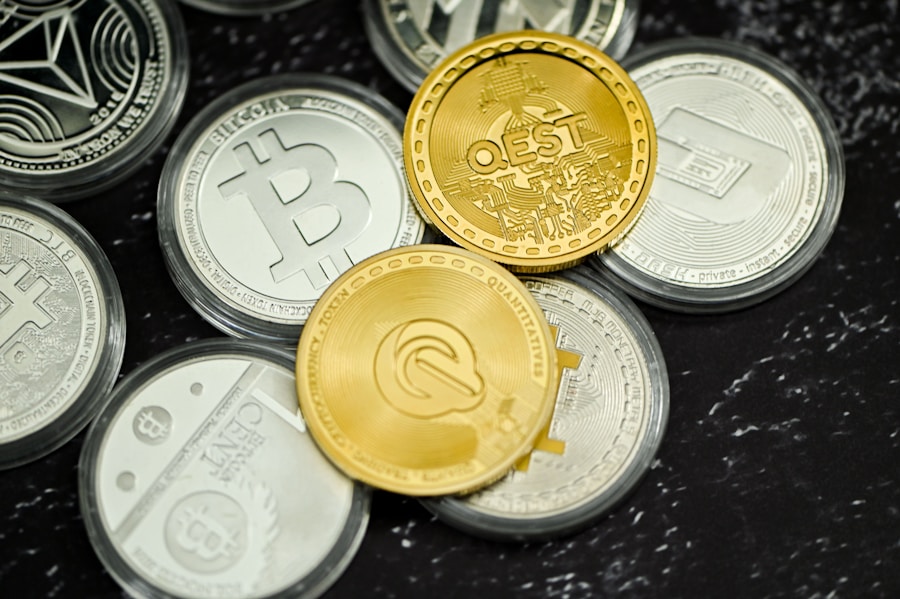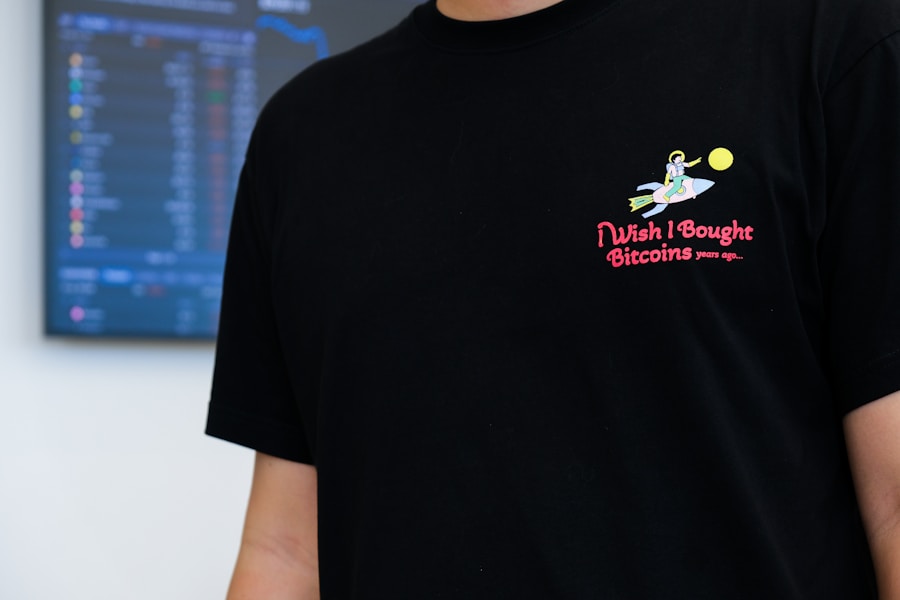NFTs, or non-fungible tokens, have taken the digital world by storm in recent years. These unique digital assets have gained significant popularity and have become a hot topic of discussion among artists, collectors, and investors. But what exactly are NFTs?
NFTs are digital tokens that represent ownership or proof of authenticity of a specific item or piece of content, such as artwork, music, videos, or even virtual real estate. Unlike cryptocurrencies like Bitcoin or Ethereum, which are fungible and can be exchanged on a one-to-one basis, NFTs are unique and cannot be exchanged on a like-for-like basis. Each NFT has its own distinct value and cannot be replicated or replaced.
The recent surge in popularity of NFTs can be attributed to several factors. Firstly, the advancement of blockchain technology has made it possible to create and trade these digital assets securely and transparently. Secondly, the COVID-19 pandemic has accelerated the shift towards digital platforms and online experiences, making NFTs an attractive option for artists and creators looking to monetize their work in the digital space. Lastly, high-profile sales of NFTs by celebrities and well-known artists have generated significant media attention and sparked curiosity among collectors and investors.
Some notable examples of high-profile NFT sales include Beeple’s artwork “Everydays: The First 5000 Days,” which sold for a staggering $69 million at auction, making it one of the most expensive artworks ever sold by a living artist. Another example is Twitter CEO Jack Dorsey’s first tweet, which was sold as an NFT for $2.9 million. These high-profile sales have brought NFTs into the mainstream consciousness and have demonstrated the potential value and demand for these digital assets.
Understanding the Concept of Ownership in the Digital Age
In the digital age, the concept of ownership has become increasingly complex. With the rise of digital content and the ease of copying and sharing information online, it has become challenging to establish and enforce ownership rights. This has been particularly problematic for artists and creators, who often struggle to protect their work from unauthorized use or reproduction.
NFTs address these challenges by providing a unique and verifiable record of ownership. Each NFT is associated with a specific piece of content and is stored on a blockchain, which is a decentralized and immutable ledger. This means that the ownership of an NFT can be easily verified and cannot be altered or tampered with. This provides artists and creators with a secure and transparent way to establish ownership and control over their digital assets.
The importance of ownership in the art world cannot be overstated. Historically, owning an original artwork has been seen as a symbol of prestige and status. However, in the digital age, where art can be easily reproduced and shared online, the concept of owning a physical object has become less relevant. NFTs offer a new way for artists to monetize their work and for collectors to establish ownership in the digital realm.
How NFT Tags are Revolutionizing the Art World
NFT tags are revolutionizing the art world by providing new opportunities for artists and increasing accessibility for collectors. Traditionally, artists have relied on galleries or auction houses to sell their work, which often involved significant fees and limited exposure. NFTs allow artists to sell their work directly to collectors on digital platforms, eliminating the need for intermediaries and opening up new revenue streams.
For artists, NFTs offer a way to monetize their digital creations in a way that was not possible before. They can sell their artwork as NFTs and receive royalties every time their work is resold on the secondary market. This provides artists with a continuous stream of income and allows them to benefit from the increasing value of their work over time.
For collectors, NFTs offer increased accessibility to the art market. They can purchase and own digital artworks without the need for physical storage or transportation. NFTs also provide collectors with a unique and verifiable record of ownership, which adds value and authenticity to their collections. Additionally, NFTs can be easily traded or sold on digital marketplaces, allowing collectors to diversify their portfolios and discover new artists.
Some examples of successful NFT art sales include the sale of a digital artwork by artist Mike Winkelmann, also known as Beeple, for $69 million. This sale not only established Beeple as one of the most valuable living artists but also demonstrated the potential value of digital art in the NFT market. Another example is the sale of a virtual real estate plot in the online game Decentraland for $1.5 million. These examples highlight the growing demand for digital assets and the potential for artists and collectors to benefit from this emerging market.
The Role of Blockchain Technology in NFTs
Blockchain technology plays a crucial role in enabling NFTs. A blockchain is a decentralized and transparent ledger that records transactions in a secure and immutable manner. Each transaction is verified by a network of computers, known as nodes, and added to a chain of blocks. This ensures that the information stored on the blockchain is tamper-proof and cannot be altered or deleted.
In the context of NFTs, blockchain technology provides a secure and transparent way to establish ownership and provenance. Each NFT is associated with a specific piece of content and is stored on a blockchain, which serves as a digital certificate of authenticity. This allows anyone to verify the ownership and history of an NFT, ensuring that it is genuine and not a counterfeit or copy.
Using blockchain technology also has several benefits for NFTs. Firstly, it provides a decentralized and censorship-resistant platform for artists and creators to sell their work. This means that they are not reliant on centralized platforms or intermediaries to distribute and monetize their content. Secondly, blockchain technology enables smart contracts, which are self-executing contracts with the terms of the agreement directly written into code. Smart contracts can automate various aspects of NFT ownership, such as royalties and licensing agreements, ensuring that artists are fairly compensated for their work.
The potential for future developments in blockchain technology is vast. As the technology continues to evolve, we can expect to see improvements in scalability, interoperability, and energy efficiency. These advancements will further enhance the capabilities of NFTs and open up new possibilities for artists, collectors, and developers.
The Benefits of Using NFT Tags for Creators and Collectors
The use of NFT tags provides several benefits for creators and collectors alike. For creators, NFTs offer increased revenue opportunities and greater control over their work. By selling their creations as NFTs, artists can receive a percentage of the sales every time their work is resold on the secondary market. This provides artists with a continuous stream of income and allows them to benefit from the increasing value of their work over time.
NFTs also enhance authenticity and provenance for collectors. Each NFT is associated with a specific piece of content and is stored on a blockchain, which serves as a digital certificate of authenticity. This ensures that the ownership and history of an NFT can be easily verified by anyone, adding value and trust to the collector’s portfolio.
Furthermore, NFTs have the potential to create new business models in the digital space. For example, artists can create limited editions or exclusive content that can only be accessed or owned by purchasing an NFT. This creates scarcity and exclusivity, which can drive up demand and value for these digital assets. Additionally, NFTs can be used to unlock special features or experiences within virtual worlds or online games, providing a unique and immersive experience for collectors.
NFTs and the Future of Intellectual Property Rights
NFTs have significant implications for intellectual property rights in the digital age. Intellectual property rights refer to the legal rights that protect creations of the mind, such as inventions, literary and artistic works, and symbols, names, and images used in commerce. These rights are essential for artists and creators to protect their work from unauthorized use or reproduction.
NFTs provide a new way for artists to establish ownership and control over their digital assets. By associating their work with an NFT, artists can prove that they are the original creators and have the right to control how their work is used or reproduced. This can help prevent plagiarism or unauthorized use of their work and ensure that they are properly credited and compensated for their creations.
NFTs also have the potential to create new models of ownership and licensing. For example, artists can sell fractional ownership of their work as NFTs, allowing multiple individuals to own a share of the artwork. This can democratize access to art and make it more affordable for a wider audience. Additionally, NFTs can be used to create licensing agreements that automatically enforce usage rights and royalties. This ensures that artists are fairly compensated for their work, even if it is used or reproduced without their direct involvement.
However, the rise of NFTs also presents challenges and opportunities for creators and consumers. On one hand, NFTs can empower artists by providing them with new revenue streams and greater control over their work. On the other hand, they can also create barriers to entry for emerging artists or those who do not have access to the necessary resources or platforms to create and sell NFTs. It is important to strike a balance between protecting intellectual property rights and promoting accessibility and inclusivity in the digital art world.
The Impact of NFTs on the Music and Gaming Industries
NFTs have also made a significant impact on the music and gaming industries. These industries have embraced NFTs as a way to monetize digital content and create new revenue streams.
In the music industry, NFTs have provided artists with a new way to sell and distribute their music. Artists can release exclusive tracks or albums as NFTs, allowing fans to purchase and own a unique piece of music. This creates a direct connection between artists and fans, bypassing traditional record labels or streaming platforms. NFTs also enable artists to receive royalties every time their music is resold on the secondary market, ensuring that they are fairly compensated for their work.
In the gaming industry, NFTs have opened up new possibilities for virtual economies and in-game assets. Players can purchase and own virtual items or characters as NFTs, giving them a sense of ownership and control over their in-game experiences. NFTs also enable players to trade or sell their virtual assets on digital marketplaces, creating a secondary market for these digital goods. This has the potential to create new revenue streams for game developers and provide players with unique and valuable gaming experiences.
However, the impact of NFTs on the music and gaming industries is not without its challenges. The high energy consumption associated with blockchain technology has raised concerns about the environmental impact of NFTs. Additionally, the accessibility of NFTs for both creators and consumers is still a barrier that needs to be addressed. It is important for these industries to find sustainable and inclusive ways to embrace NFTs while minimizing their negative effects.
NFTs and the Importance of Authenticity in the Digital World
Authenticity is a crucial aspect of the digital world, where information can be easily manipulated or falsified. NFTs address this issue by providing a unique and verifiable record of ownership and provenance. Each NFT is associated with a specific piece of content and is stored on a blockchain, which serves as a digital certificate of authenticity.
The importance of authenticity in the digital age cannot be overstated. With the rise of deepfakes and digital manipulation, it has become increasingly difficult to distinguish between what is real and what is fake. NFTs provide a way to establish trust and credibility in the digital realm by ensuring that the ownership and history of a digital asset can be easily verified.
NFTs also have the potential to create new standards and practices for authenticity in the digital world. For example, artists can include additional metadata or information about their work within the NFT, such as the creation process or the inspiration behind the artwork. This provides collectors with a deeper understanding of the artwork and adds value to their collection.
The Ethics of NFTs: Environmental Concerns and Accessibility
While NFTs offer exciting opportunities for artists and collectors, they also raise ethical concerns, particularly in relation to the environment and accessibility.
One of the main criticisms of NFTs is their high energy consumption. The process of creating and trading NFTs requires significant computational power, which in turn requires a large amount of electricity. This has led to concerns about the environmental impact of NFTs, particularly in terms of carbon emissions. Critics argue that the energy consumption associated with NFTs is unsustainable and contributes to climate change.
Another ethical concern is the accessibility of NFTs. While NFTs have provided new opportunities for artists to monetize their work, not all artists have equal access to these platforms or resources. Emerging artists or those from marginalized communities may face barriers to entry in the NFT market, limiting their ability to benefit from this emerging technology. Additionally, the high transaction fees associated with NFTs can make it difficult for smaller collectors or investors to participate in the market.
To address these ethical concerns, it is important for the NFT community to work towards more sustainable and inclusive practices. This could involve exploring alternative blockchain technologies that are more energy-efficient or implementing mechanisms to offset the carbon emissions associated with NFTs. It is also crucial to create platforms and initiatives that support and promote underrepresented artists, ensuring that the benefits of NFTs are accessible to all.
NFTs and Their Potential for Social and Cultural Change
NFTs have the potential to promote social and cultural change by providing a platform for new forms of expression and activism. Artists and creators can use NFTs to address social issues, challenge traditional power structures, and amplify marginalized voices.
One example of NFTs promoting social change is the use of NFTs to support charitable causes. Artists can create and sell NFTs with a portion of the proceeds going towards a specific charity or cause. This not only raises awareness about important issues but also provides a tangible way for individuals to contribute and make a difference.
NFTs also enable new forms of expression and activism. Artists can create interactive or immersive experiences that engage viewers in a meaningful way. They can use NFTs to explore themes of identity, representation, or social justice, sparking conversations and challenging societal norms.
However, the potential for social and cultural change through NFTs is not without its challenges. The commercialization of art and the focus on financial value can sometimes overshadow the underlying message or intention of the artwork. It is important for artists and collectors to approach NFTs with a sense of integrity and authenticity. While the digital art market offers new opportunities for artists to gain recognition and financial support, it also raises concerns about the commodification of creativity. Artists must navigate the fine line between creating art for its intrinsic value and creating art solely for profit. Additionally, the accessibility of NFTs can perpetuate existing inequalities in the art world, as those with more resources and connections may have an advantage in promoting and selling their work. Therefore, it is crucial for artists, collectors, and platforms to prioritize inclusivity, diversity, and ethical practices to ensure that NFTs contribute to positive social and cultural change rather than reinforcing existing power dynamics.









